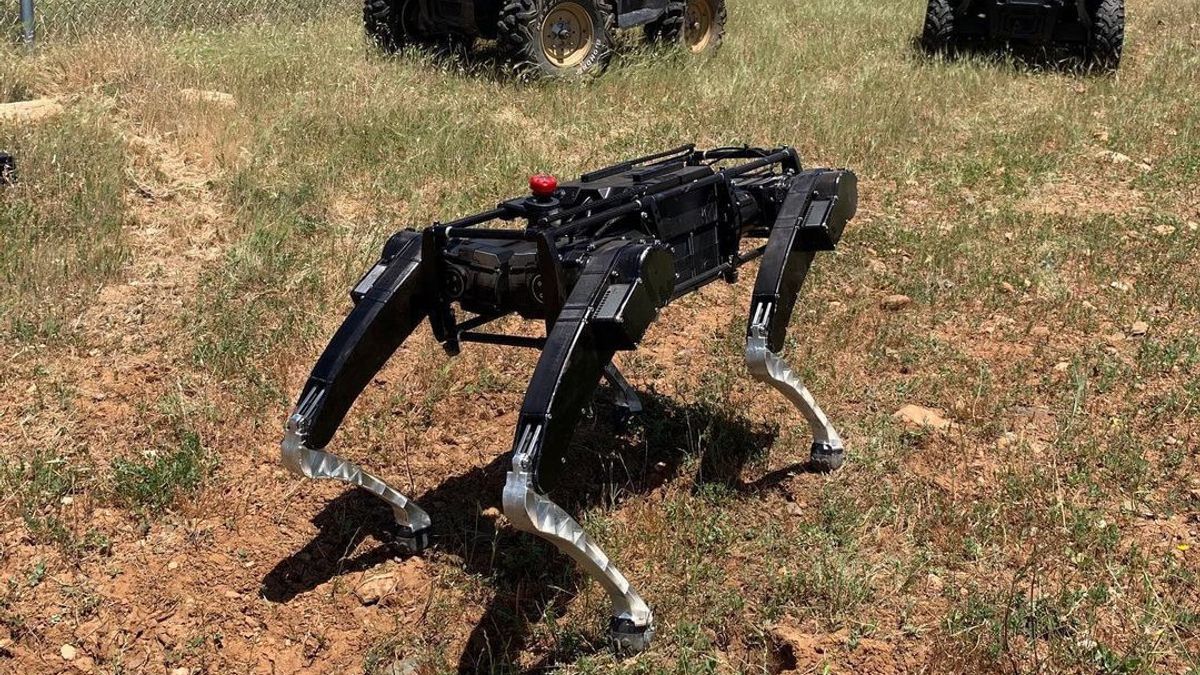JAKARTA - The United States is testing robot dogs to patrol its border with Mexico, in a bid to increase its Customs and Border Protection (CBP) presence along its southern border.
The move has raised alarm among civil rights groups and some politicians.
"It's a shame how both sides are fighting so desperately to maintain their capabilities, to pump endless public money into militarization," US Democratic Congresswoman Alexandria Ocasio-Cortez said in response to the news on Twitter, citing Euronews Feb. 9.
"From tanks in police departments to corrupt military contracts, funding this violence is bipartisan + non-controversial, but healthcare + housing."
The robot dog is produced by Ghost Robotics, a security technology company that works with the military.

They had previously caused controversy when Ghost Robotics teamed up with Sword International, a small arms specialist and added an unmanned rifle to the bot with 30x optical zoom, a thermal camera for targeting in the dark and an effective range of 1,200m. However, the robots deployed along the border are unarmed.
A blog post by the US Department of Homeland Security (DHS) said they would be a "help (or 'claw')" for CBP personnel.
"The southern border can be an inhospitable place for people and animals, and that's why a machine can excel there," said Brenda Long, program manager of the Science and Technology Directorate at DHS.
Separately, Gavin Kenneally, chief product officer at Ghost Robotics said, the robot can traverse "all kinds of natural terrain including sand, rock and hills, as well as man-made environments, such as stairs".
The plan was that the machines would patrol the border, recording video and scanning their surroundings as they left. This has led to privacy concerns, about surveillance of people living near the border without consent.
In this regard, the Electronic Frontier Foundation voiced disquiet at development and warned of mission creep, when technology is given to law enforcement only for certain or extreme cases, but is then used outside those boundaries.

Meanwhile, the Honolulu Police Department invested in a robot dog made by Boston Dynamics last year, drawing criticism when police used it to scan the eyes of homeless people. In New York, police stopped using the same robot dog following public outcry.
To note, giving more power and technology to DHS is also causing unrest in some places. In recent years, the department has come under scrutiny for its treatment of asylum seekers at the border.
Human Rights Watch found 160 internal reports of abuse and harassment, including physical and sexual harassment, of asylum applicants at the hands of officers in several components of DHS, primarily CBP officers and Border Patrol agents between 2016 and 2021.
"DHS's plan to use robot patrol dogs on its borders is a civil liberties disaster in the making," the American Civil Liberties Union (ACLU) said on Twitter.
"The government must retract this dangerous proposal, and the Biden administration must put the brakes on our country's decline into an anti-immigrant dystopia."
It has not been announced whether robot dogs will become permanent fixtures along the border, nor has the cost of the project disclosed. However, DHS said the trial was 'successful'.
"Don't be surprised if in the future we see the robot 'Fido' in the field, walking side by side with CBP personnel," they wrote in a blog post.
The English, Chinese, Japanese, Arabic, and French versions are automatically generated by the AI. So there may still be inaccuracies in translating, please always see Indonesian as our main language. (system supported by DigitalSiber.id)













